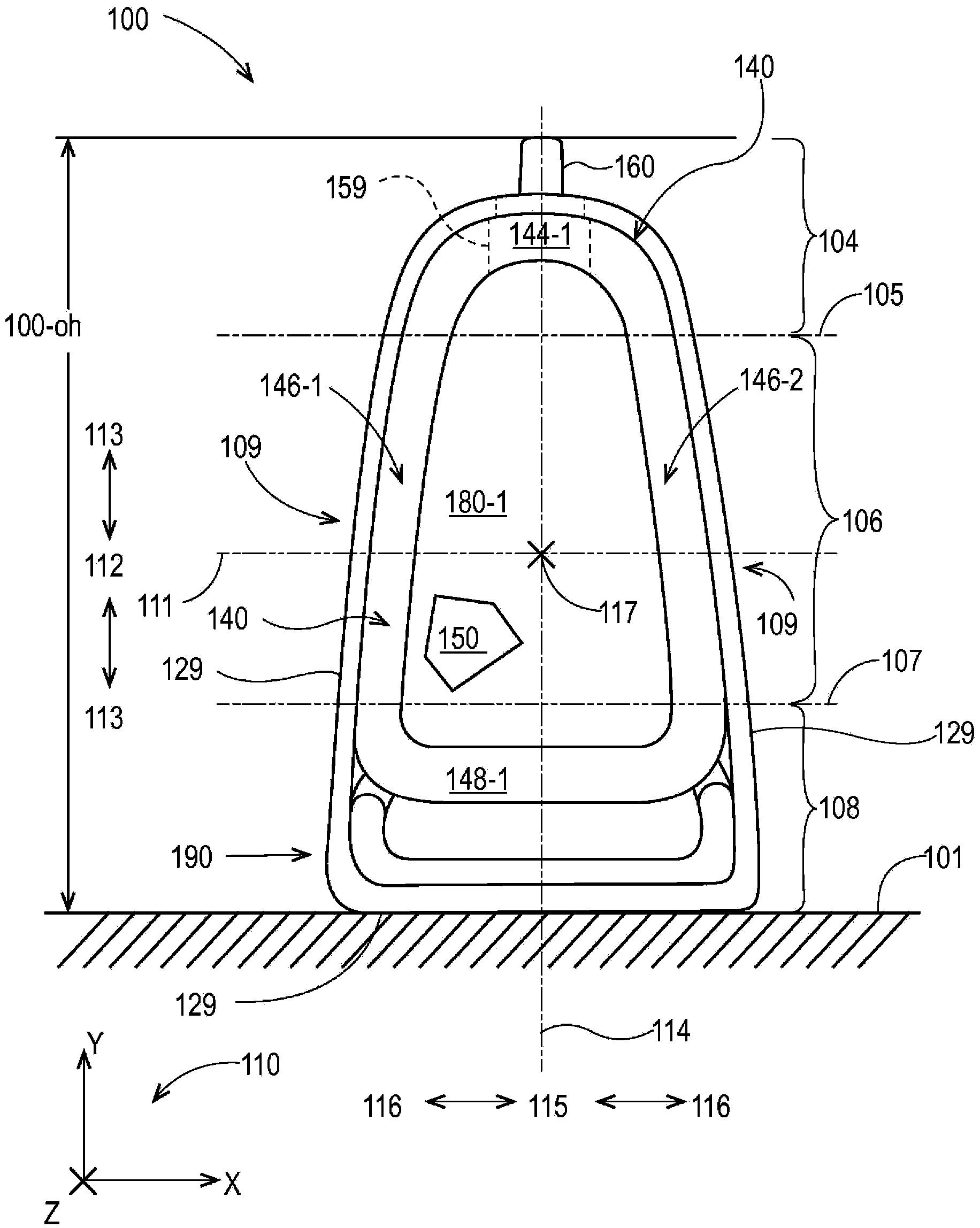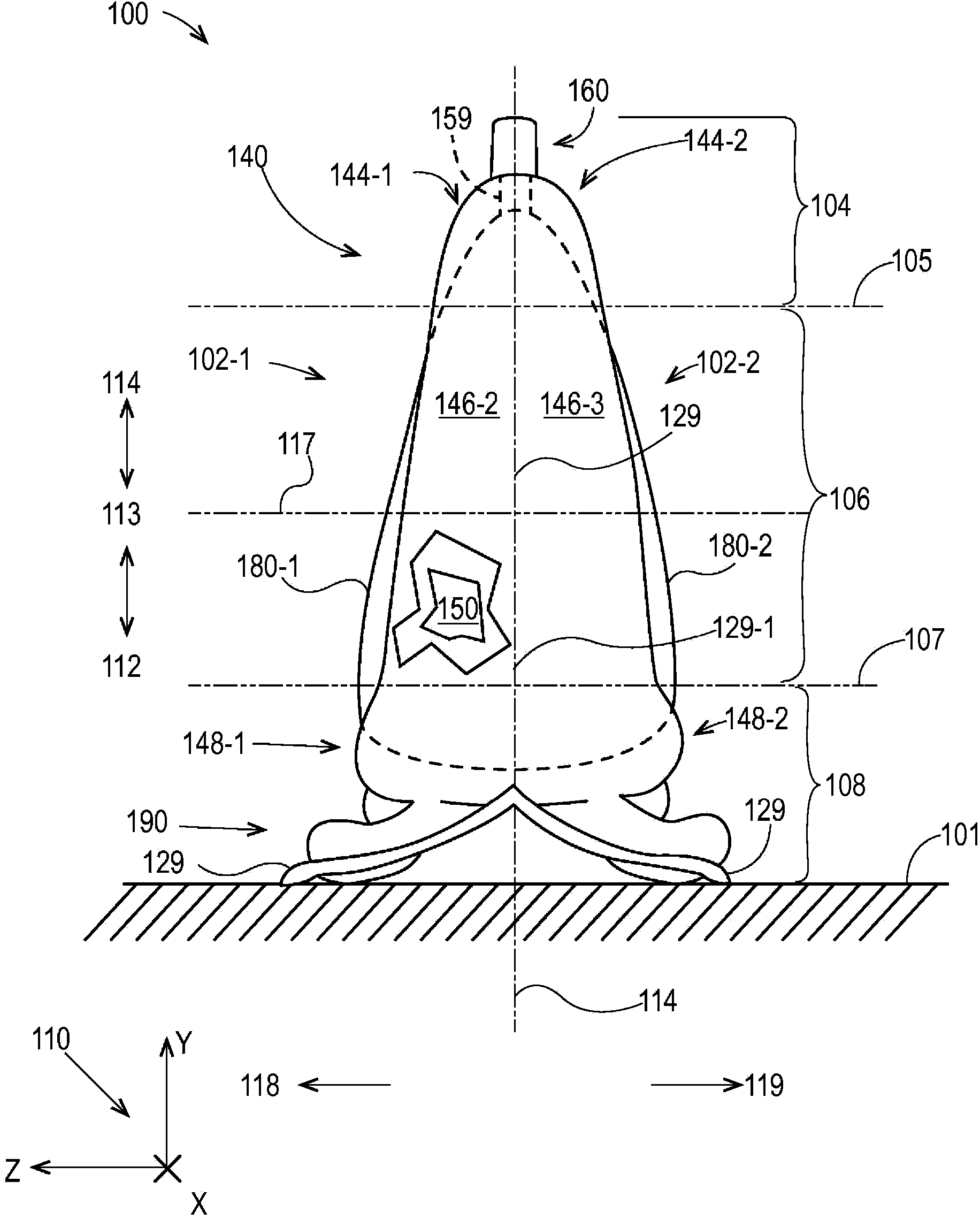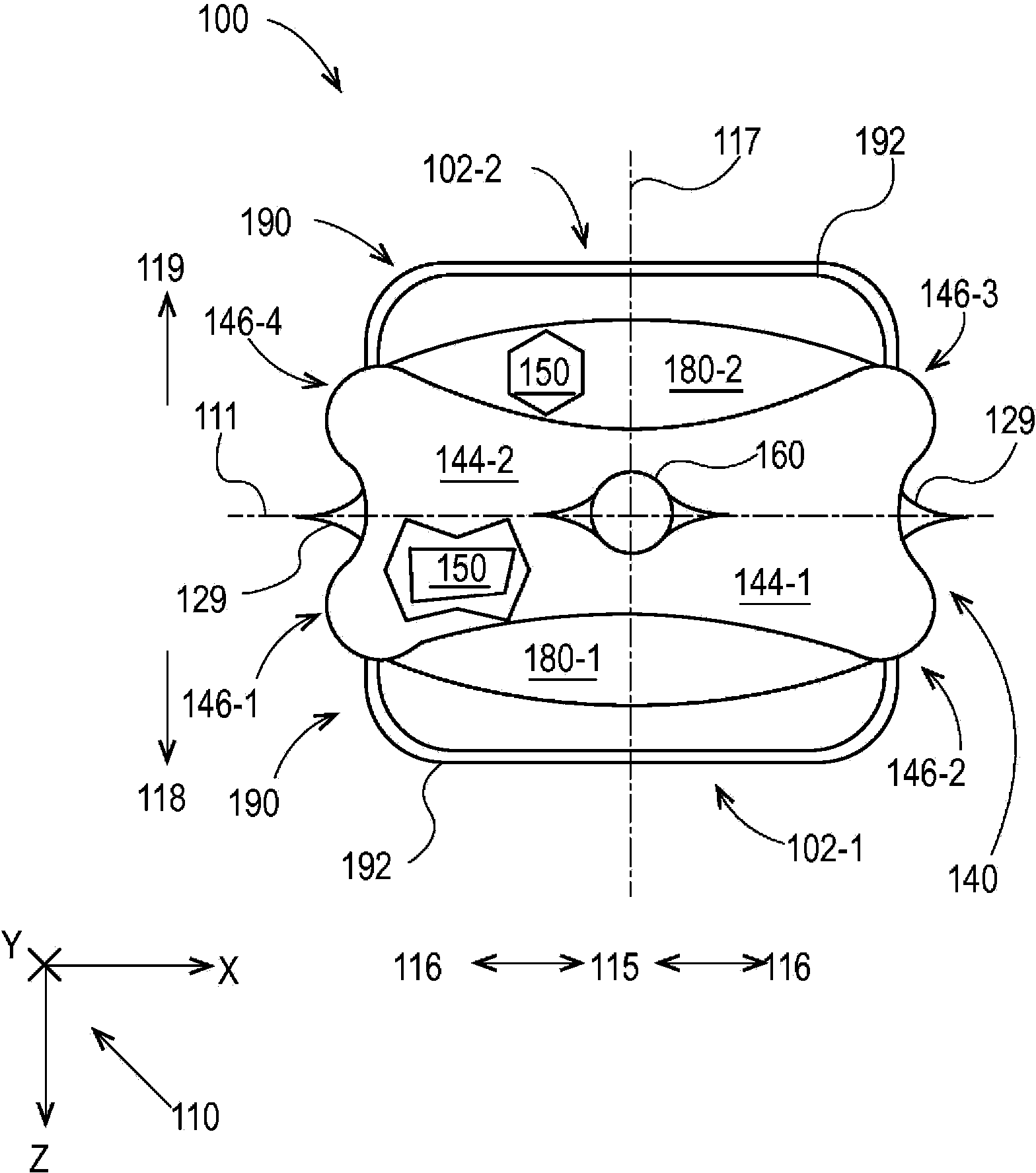Flexible materials for flexible containers
A flexible material and flexible container technology, applied in the container field, can solve problems such as unsightly, difficult to distribute flow products, limit decoration size and shape, etc., and achieve the effects of not easy to wear, easy to print, and easy to distribute
- Summary
- Abstract
- Description
- Claims
- Application Information
AI Technical Summary
Problems solved by technology
Method used
Image
Examples
example 1
[0235] A first laminate was formed with the layers ordered as shown below. The total film thickness was about 90 microns. The PE layer was a blend of 90% LLDPE(ZN) with 10% LDPE as determined by Temperature Rising Elution Fractionation (TREF).
[0236] Composition and order of layers
Layer thickness (microns)
Features
PE
18
sealable layer
bonding layer
<2
bonding layer
nylon
~3
reinforcement layer
EVOH
6
nylon
~3
reinforcement layer
EVA
22
bonding layer
nylon
~3
reinforcement layer
EVOH
6
gas barrier
nylon
~3
reinforcement layer
bonding layer
<2
bonding layer
PE
18
sealable layer
[0237] The first laminate has the following properties:
[0238]
example 2
[0240] A first laminate was formed with the layers ordered as shown below. The total film thickness was about 92 microns. The PE layer was 100% LLDPE(ZN) as determined by Temperature Rising Elution Fractionation (TREF).
[0241]
[0242] The first laminate has the following properties:
[0243]
example 3
[0245] A first laminate was formed with the layers ordered as shown below. The total film thickness was about 80 microns. The PE layer was mainly LDPE with a small amount of LLDPE (ZN) as determined by temperature rising elution fractionation (TREF).
[0246] Composition and order of layers
Features
PE
32μm
sealable layer
bonding layer
<2μm
bonding layer
EVOH
12μm
gas barrier
bonding layer
<2μm
bonding layer
PE
32μm
sealable layer
[0247] The first laminate has the following properties:
[0248]
PUM
| Property | Measurement | Unit |
|---|---|---|
| Adhesive strength | aaaaa | aaaaa |
| Adhesive strength | aaaaa | aaaaa |
| Adhesive strength | aaaaa | aaaaa |
Abstract
Description
Claims
Application Information
 Login to View More
Login to View More - R&D
- Intellectual Property
- Life Sciences
- Materials
- Tech Scout
- Unparalleled Data Quality
- Higher Quality Content
- 60% Fewer Hallucinations
Browse by: Latest US Patents, China's latest patents, Technical Efficacy Thesaurus, Application Domain, Technology Topic, Popular Technical Reports.
© 2025 PatSnap. All rights reserved.Legal|Privacy policy|Modern Slavery Act Transparency Statement|Sitemap|About US| Contact US: help@patsnap.com



